
 |
 |
||||||||
|
|
Lessons Menu - Lesson 1 - Lesson 2 - Lesson 3 - Lesson 4 - Lesson 5 - Lesson 6 - Lesson 7 - Lesson 8 |
| Lesson Plan 6 - Transportation THE RAILROAD COMES TO SACRAMENTO |
download
lesson06.pdf |
|
|
OVERVIEW STUDENT OBJECTIVES CALIFORNIA HISTORY STANDARDS
BACKGROUND ARTICLE 6
STUDENT ACTIVITY SHEET 6 AND KEY |
ADDITIONAL ITEMS AVAILABLE IN THIS LESSON PLAN: |
|
DOCUMENTS TO DISCUSS
(view online or print screen) |
||||
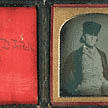 view large image |
1. Theodore Judah [1848] Seated portrait. Daguerreotype. |
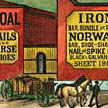 view large image |
2. Store and warehouse of Huntington, Hopkins and Co. [1880] Store and warehouse of Huntington, Hopkins and Co. |
|
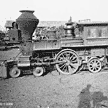 view large image |
3. Central Pacific Railroad steam locomotive No. 4 [188-?] Central Pacific Railroad No. 4, T. D. Judah, placed into service April 9, 1864. |
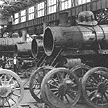 view large image |
4. Railroad Shops [not dated] Southern Pacific Railroad Sacramento Shops complex: interior view of Machine Shop. |
|
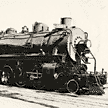 view large image |
5. C.P. Huntington and 1919 engine [ca. 1923] View of the C.P. Huntington, built for the Central Pacific Railroad in 1863, next to Southern Pacific locomotive #3631, built in 1919. |
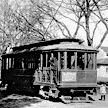 view large image |
6. Streetcar near Western Pacific Railroad Depot [ca. 1915] Streetcar stopped at Western Pacific Depot at 19th and K Streets, Sacramento. |
|
|
INSTRUCTIONS 2. Read Background Article 6. You may wish to read it to your students or have them read it by themselves. Discuss any questions that they may have. 3. Show and discuss Document 1, Theodore Judah. Tell them that this image shows one of the people who helped promote the building of the Transcontinental Railroad. Can anyone identify the person in the photograph? How old do they think the photograph is? (1848) Can anyone identify the type of photograph it is? (daguerreotype) 4. Document 2, Store and warehouse of Huntington, Hopkins and Co. Tell students that this is the building where the Big Four met with Judah. This building was moved to a different block but still stands in Old Sacramento. Ask if any students have visited Old Sacramento. 5. Document 3, Central Pacific Railroad steam locomotive No 4. This image depicts one of the early Central Pacific locomotives. Ask students if they can find the photographer’s shadow in this image. 6. Document 4, Railroad Shops. There are many images of the railroad shops in the SHO database. Ask students what type of work would be needed to build and maintain trains. 7. Document 5, C.P. Huntington and 1919 engine. Ask students to compare and contrast the two locomotives. Which is older? What similarities and differences do they notice about the two? Tell the students that the C.P. Huntington (Central Pacific No. 3) is a famous locomotive that is still on display in Sacramento at the California State Railroad Museum. Ask if any students have seen this locomotive. 8. Document 6, Streetcar near Western Pacific Railroad Depot. Ask students to identify the type of vehicle. (streetcar) Have any students been to a city where streetcars are still used? How were streetcars powered? (horses and then electricity) How was this streetcar powered? How can they tell? (power line) 9. Give students Activity Sheet 6: The Railroad Comes to Sacramento (printed from the PDF file). After they have completed the activity, discuss their answers as a group. FOLLOW-UP 2. Find three different types of ephemera in the database that relate to the railroads. 3. Write a journal entry describing a trip that you took on a railroad in the 1870s. How did it feel to ride in a passenger train? Where did you sleep? What did you eat? Whom did you meet, and where were they going? Map the trip as you would have taken it then and today. Calculate the cost of the trip and compare it to the cost of the same trip today. 4. Find out more about the life of Chinese laborers who helped build the Transcontinental Railroad. Write a letter from a Chinese laborer working on the railroad to someone in China, describing his life in America. 5. Set up a railroad business in your classroom. Map the routes that you will establish to move goods and passengers. Describe what resources you will need to build your railroad. Convince investors why your route makes sense. Name your railroad. In the database, find examples of documents that you will need for your railroad business and make your own (example: advertisements, program from opening celebration). Role-play a trip, with passengers buying tickets, deciding what to pack, and describing what they see on and from the train. 6. If you live close enough, visit the California State Railroad Museum and the other related historical sites in Old Sacramento. REFERENCES AND RESOURCES Blumberg, R. Full steam ahead: The race to build a transcontinental railroad. California State Railroad Museum (museum guide). 1999. Holden, W. Sacramento: Excursions into its history and natural world. Hunt, R. D. and Arent, W.S. Oxcart to airplane. Los Angeles, CA: Steinheimer, R. California State Railroad Museum: Railroading in California and
the West. RELATED LINKS Brief History of the Sacramento Northern California State Railroad Museum Central Pacific Railroad Photographic History Museum Union Pacific Railroad History
|
| Sacramento History Online © 2003 - 2004 | |